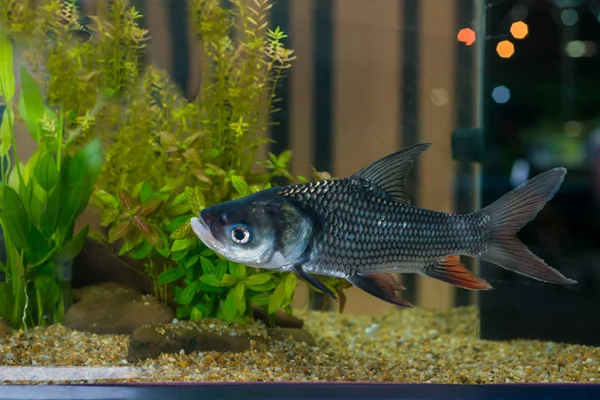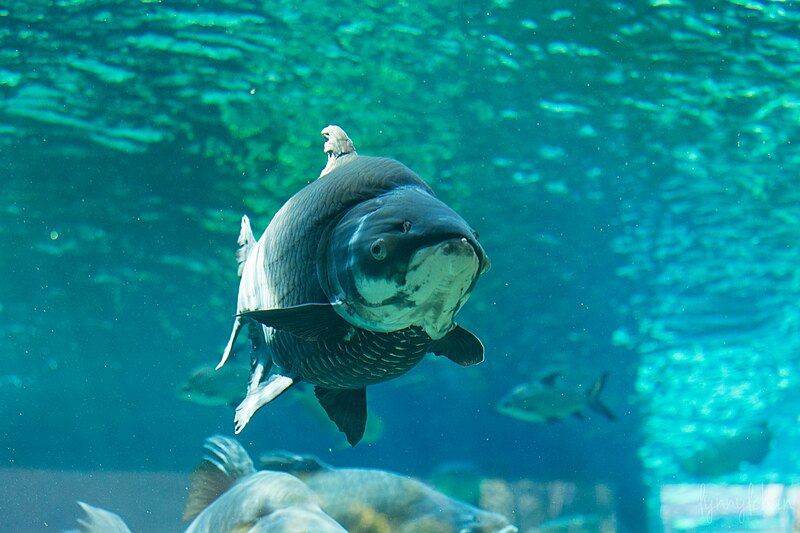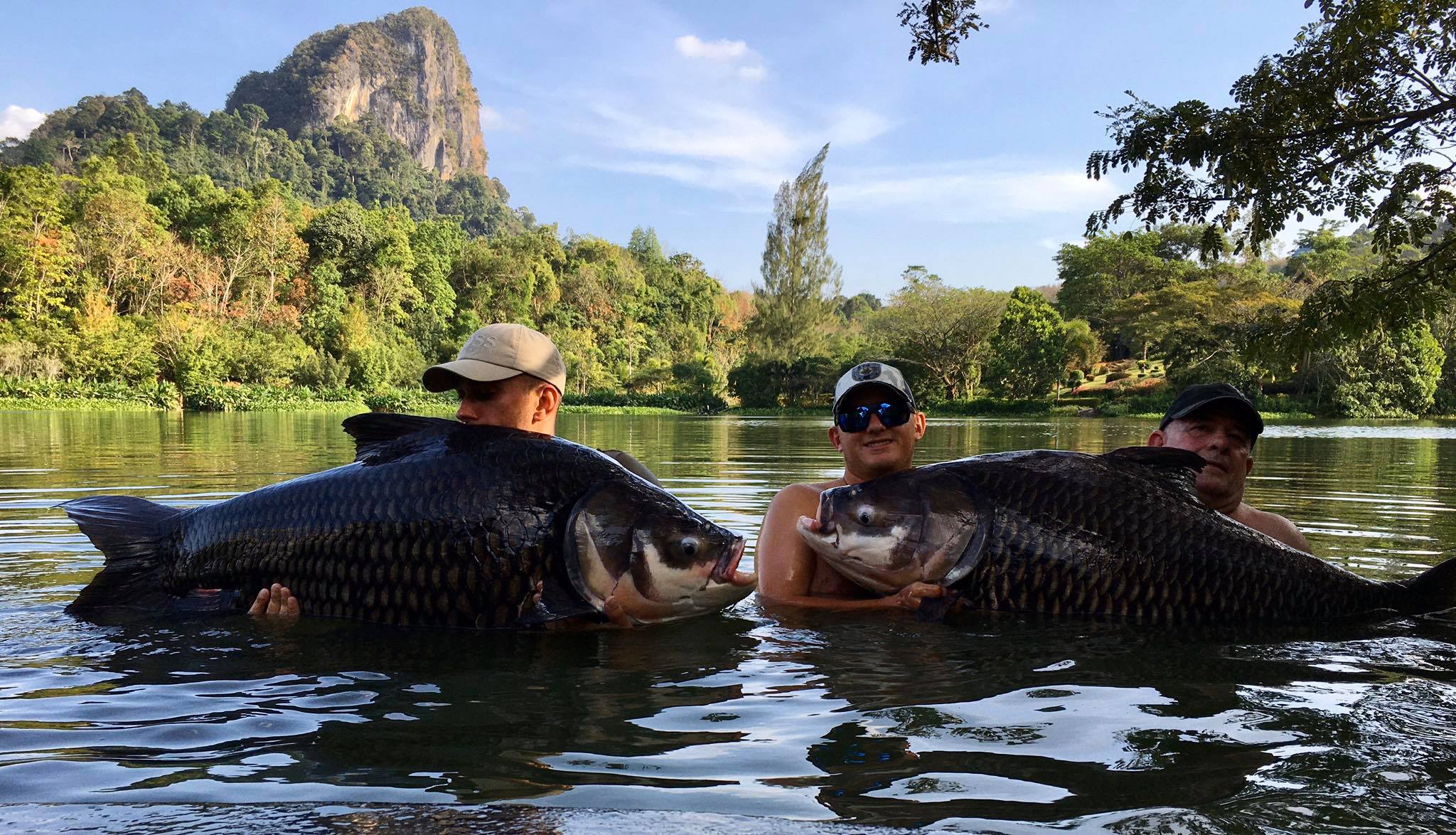 The Siamese carp, also known as the Giant Barb or scientifically as Catlocarpio siamensis, is a remarkable species that stands out as one of the largest freshwater fish in the world. Native to the river basins of Southeast Asia, this giant fish is revered by anglers for its size and strength. This article delves into the characteristics, habitat, behavior, ecological significance, and conservation efforts surrounding the Siamese carp.
The Siamese carp, also known as the Giant Barb or scientifically as Catlocarpio siamensis, is a remarkable species that stands out as one of the largest freshwater fish in the world. Native to the river basins of Southeast Asia, this giant fish is revered by anglers for its size and strength. This article delves into the characteristics, habitat, behavior, ecological significance, and conservation efforts surrounding the Siamese carp.

Physical Characteristics
The Siamese carp is renowned for its impressive size and distinctive appearance:
- Size and Weight: The Siamese carp can grow up to 3 meters (10 feet) in length and weigh as much as 300 kilograms (660 pounds), making it one of the largest species of carp.
- Body Structure: This fish has a deep, laterally compressed body with large, thick scales that range in color from dark gray to black. The fins are typically a darker shade, contributing to its formidable appearance.
- Head and Mouth: The head is large with a broad, blunt snout. The mouth is terminal and equipped with fleshy lips, adapted for bottom feeding.
- Lifespan: Siamese carp are known to have long lifespans, often exceeding 20 years in the wild.
Habitat and Distribution
The Siamese carp is native to the freshwater river systems of Southeast Asia, particularly the Chao Phraya and Mekong river basins. It prefers slow-moving or standing waters, such as deep pools, floodplains, and large lakes. Seasonal migrations are common, with the fish moving upstream during the wet season to spawn and downstream during the dry season.
Environmental Preferences
- Water Temperature: The Siamese carp thrives in warm tropical waters with temperatures ranging from 22 to 30 degrees Celsius (72 to 86 degrees Fahrenheit).
- Water Quality: Clear, well-oxygenated water with a moderate flow is ideal for this species. They are also found in turbid conditions, but water quality is crucial for their health and growth.
- Vegetation: The presence of submerged and floating vegetation provides essential cover and feeding grounds for the Siamese carp, which feeds on plant matter, algae, and detritus.
Behavior and Diet

The Siamese carp is known for its peaceful jpslot nature and herbivorous diet:
- Feeding Habits: Siamese carp primarily feed on aquatic plants, algae, and detritus. They use their fleshy lips to forage along the bottom, uprooting plants and sifting through sediment for food.
- Social Behavior: These fish are generally solitary or found in small groups. During the breeding season, they may form larger aggregations.
- Breeding: Spawning typically occurs during the wet season when water levels rise, providing access to floodplains. The fish lay their eggs in shallow, vegetated areas where the young can find abundant food and shelter.
- Activity Patterns: Siamese carp are most active during the early morning and late afternoon, although they can be seen feeding throughout the day.
Ecological Significance
The Siamese carp plays a vital role in its ecosystem:
- Nutrient Cycling: As herbivores, Siamese carp contribute to the cycling of nutrients within aquatic ecosystems by consuming plant material and releasing nutrients back into the water through their waste.
- Habitat Modification: Their foraging activities help maintain the structure of aquatic vegetation, preventing overgrowth and promoting biodiversity.
- Food Source: The Siamese carp serves as a crucial food source for various predators, including birds, reptiles, and larger fish.
Angling and Cultural Significance
The Siamese carp holds a special place in the hearts of anglers and local communities:
- Sport Fishing: Due to its immense size and strength, the Siamese carp is a prized catch for sport fishermen. It is known for putting up a strong fight, making it a challenging and rewarding target.
- Cultural Importance: In many Southeast Asian cultures, the Siamese carp is considered a symbol of strength and endurance. It is often featured in local folklore and art.
- Economic Impact: Sport fishing for Siamese carp contributes to local economies through tourism and the fishing industry. Catch-and-release practices are commonly encouraged to promote conservation.
Conservation Status
Despite its significance, the Siamese carp faces several threats:
- Habitat Loss: Deforestation, dam construction, and water pollution have led to significant habitat degradation, impacting the population of Siamese carp.
- Overfishing: Both commercial and recreational fishing pressures have contributed to a decline in their numbers. The demand for large fish in the food market exacerbates this issue.
- Climate Change: Changes in weather patterns and water temperatures can disrupt spawning cycles and reduce suitable habitat areas.
Conservation Efforts
Efforts to conserve the Siamese carp are underway:
- Protected Areas: Establishing and enforcing protected areas within key habitats can help preserve critical spawning and feeding grounds.
- Sustainable Fishing Practices: Promoting catch-and-release fishing, regulating fishing seasons, and implementing size limits can reduce the impact of overfishing.
- Habitat Restoration: Restoring degraded habitats through reforestation, pollution control, and the removal of barriers to migration can support population recovery.
- Research and Monitoring: Continued research on the biology and ecology of the Siamese is essential for informing conservation strategies. Monitoring populations can help assess the effectiveness of conservation measures.
- Community Engagement: Educating local communities about the importance of conserving the Siamese carp and involving them in conservation efforts can foster stewardship and support for sustainable practices.
Conclusion
The Siamese carp is a fascinating and important species that enriches the biodiversity of Southeast Asia’s freshwater ecosystems. Its impressive size, peaceful nature, and ecological role make it a species worth protecting. Through concerted conservation efforts, sustainable fishing practices, and habitat restoration, we can ensure that future generations continue to witness the majesty of the Giant Barb. Whether admired for its cultural significance or sought after by anglers for the thrill of the catch, the Siamese carp remains a symbol of nature’s grandeur and resilience.
Read More Article About “Modern Medicine: Transforming Healthcare in the 21st Century“


